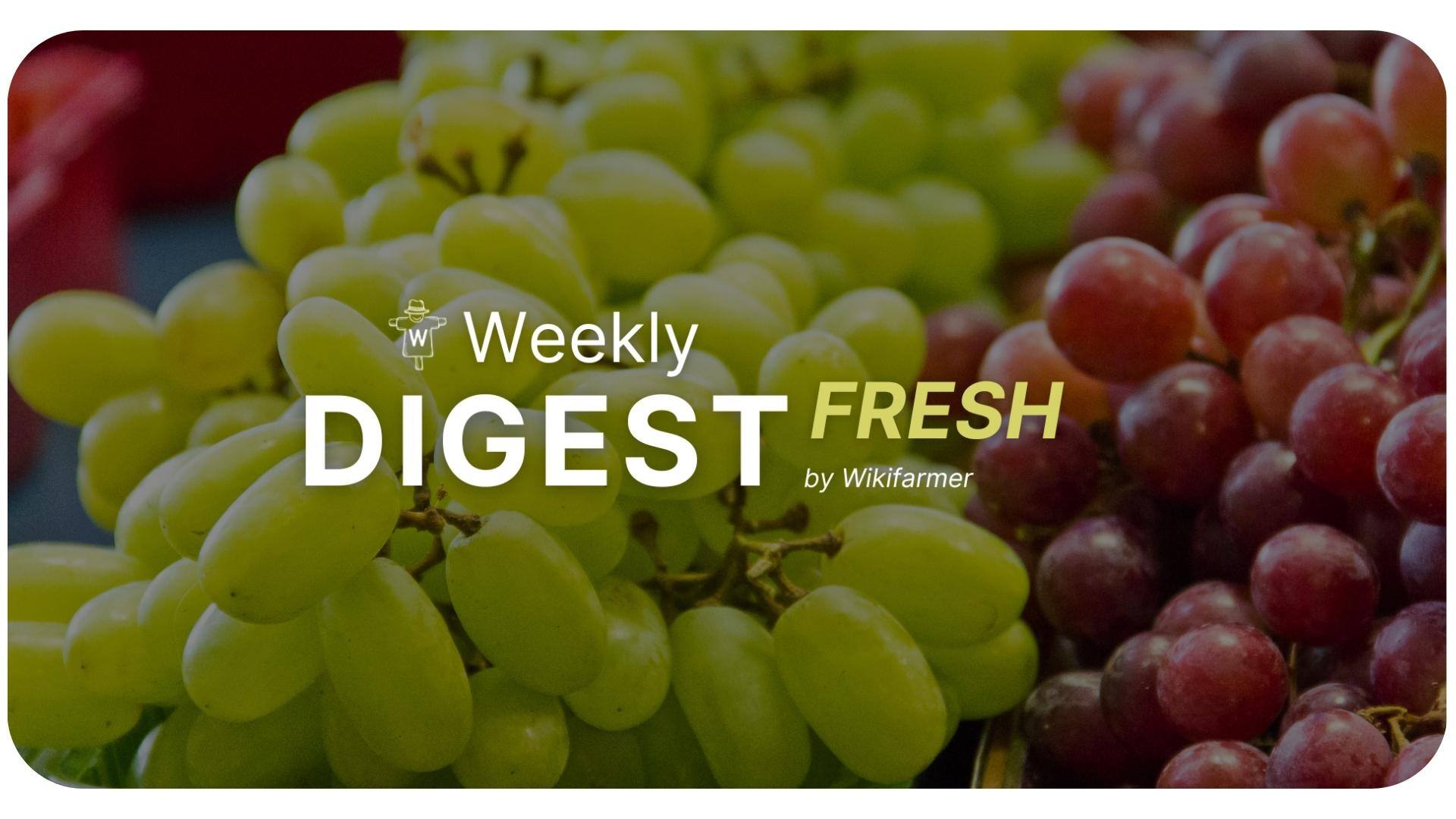Grapes Market Digest w35

Weekly updates on the grapes market
Price movements in the EU
The table grape season remains strong in Europe, with more origins becoming available in European wholesale markets. However, major grape-producing countries have reported that the prolonged heatwave has affected harvest volumes, resulting in lower yields than last year. Despite this, pricing remained stable during the summer holidays, but the market has since become more active. We have gathered valuable information to provide a better overview of market trends through Wikifarmer transactions and insights from our expert team. Additionally, to enhance our understanding of pricing, we have included data from the German Federal Ministry of Food and Agriculture and the French Market News Network, as the wholesale markets in Germany and France are key players in the agrifood trade.
-png-1.png?width=762&height=487&name=CWEcH-mean-fruit-prices-in-german-wholesale-markets%20(3)-png-1.png)
The Central European wholesale markets were dominated by Italian grapes with a wide range of grape varieties. In addition to Victoria and Michele Palieri, the Italia variety has also gained some significance. Meanwhile, supplies from France, Greece, and Spain were often less prominent. Turkish Sultana grapes still played a relatively significant role in some instances. Overall, the demand did not always keep up with the increased availability, leading to occasional downward price trends. However, there were some price increases in Munich, where the offers were slightly pricier.
-png-2.png?width=765&height=453&name=X5z5c-mean-prices-in-the-rungis-market-fr-%20(11)-png-2.png)
The competition in the European grape market is intensifying due to an early start to the Greek season, which adds to the already large volumes coming from Spain, Italy, and Egypt. The earlier-than-expected harvest of some varieties can lead to a smaller grape crop this year partly because it has begun much earlier than usual, with varieties like Sugar Crisp picked as early as 5 August rather than the typical late August start. This trend has continued with other varieties, such as Sweet Globe, Sweet Celebration, and Jack’s Salute. The market is currently saturated with grapes from Spain, Italy, and Egypt, with companies following strategies that focus on regions where the grape season is just beginning.
Moving into the non-EU market, the Ministry of Environment, Water, and Agriculture of Saudi Arabia reported that the annual grape production surpassed 110,500 tonnes, reaching a self-sufficiency rate of 58 percent. Grape cultivation covers 4,720 hectares, with Tabuk as the leading region, producing 46,939 tonnes annually. Other regions, including Qassim, Hail, and Asir, also contribute significantly to the production. The ministry's report emphasizes the economic viability of grape farming due to its low water and soil requirements and its suitability to the Saudi climate. The ministry's ongoing efforts focus on increasing local fruit consumption, improving fruit quality, and supporting farmers to achieve better financial outcomes. Through initiatives to boost local fruit production, enhance quality and safety standards, and develop marketing strategies, the ministry aims to empower local agricultural producers.
Extended harvest and new market strategies for Sicilian table grapes
As mentioned, many regions were affected by the high temperatures that caused earlier harvesting in the grapes sector. On the contrary, this year has been atypical for Sicilian table grapes, especially in the key production areas of Mazzarrone and Canicattì. Traditionally, the Victoria grape variety's harvest would be winding down by now, but this season has extended a month longer, not wrapping up until the end of August. This prolonged harvest has affected market dynamics, as initial producer prices set at 3 euros per kilo didn't allow for sufficient profit margins at the wholesale level, resulting in reduced earnings for traders. While the Black Magic variety fared slightly better with more favorable resale prices, the Victoria variety's current production price has dropped to around 0.50 euros per kilo. This is a typical price trend at the season's end, particularly given the abundant grapes produced early on.
-jpg.jpeg?width=757&height=1594&name=Untitled%20design%20(28)-jpg.jpeg)
In response to evolving market needs, a new line of high-quality grapes has been launched for retailers in Romania and Poland, featuring popular varieties like Italia and Red Globe with superior quality and unique packaging. While the early ripening campaign continues, initial sales of these medium-late varieties have begun, with grapes priced at lower levels. There is hope for a modest rise in production prices later in the season, as occurred in October and November last year. Over the past two decades, the expansion into Eastern European markets has significantly increased sales volumes and distribution, extending beyond Romania to several other countries in the region.
.png?width=450&height=87&name=New%20Logo%20(1).png)